Skrifstofa Skógræktarfélags Íslands er lokuð fimmtudaginn 21. júlí vegna sumarleyfa og veikinda starfsmanna.
The Tree of the Year 2021 is a bird cherry standing on the site of the old plant nursery by Rauðavatn in Reykjavík. The age of the bird cherry is not fully known, but it is most likely the offspring of a bird cherry planted in the early years of the nursery at the beginning of the 20th century, but that tree is the foremother of a number of bird cherries throughout the capital area. The Tree of the Year 2021 is the first bird cherry to be nominated. The tree has multiple trunks making the measurements of it at the nomination ceremony a bit tricky. Its height was measured at 8 m, with the thickest trunk measuring a radius of 7,5 cm at chest height.
Location on Google Maps: https://goo.gl/maps/avjoLt9Bw3z2WM586
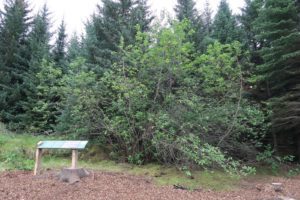
The Tree of the Year 2020 is an oak-leaved mountain ash standing at Skógar in Þorskafjörður in the Westfjords. The tree was planted in the early 1950’s by Jochum M. Eggertsson, one of the pioneers of the bahá’ía community in Iceland who are the current owners of Skógar and continuing Jochum’s planting activities. The tree has weathered tough growing conditions, which has given it a distinctive and interesting shape – bent to the wind but never broken. The tree was measured at the nomination ceremony and was 5,9 m in height, with a trunk diameter of 26,5 cm at knee-height and 17,3 cm at chest height, where the trunk has split in two.
Location on Google Maps: https://goo.gl/maps/bn6EuCnQwyYXP2An9
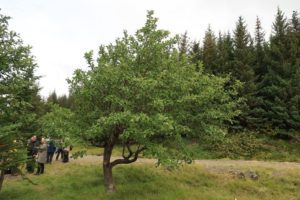
The Tree of the Year 2019 is a Norway spruce located in Elliðaárhólmi in Reykjavík and is the first Norway spruce to be nominated as Tree of the Year. The tree was planted around 1975 and has thrived, but it has a particularly good shape, most likely because it was mostly surrounded by birch trees and thus got plenty of light growing up. The tree was measured after the nomination ceremony and turned out to be 12,2 m in height, with a trunk radius of 23,7 cm at chest height.
Location on Google Maps: https://goo.gl/maps/HbndQJPe4nz4xuHc9
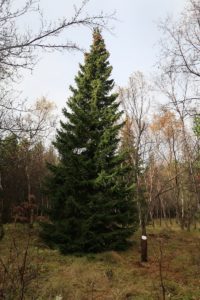
The Tree of the Year 2018 is a silky-leaved osier located at Ytri-Skógar in S-Iceland and is the first tree of this species to be nominated as Tree of the Year. The tree was most likely planted in 1948, by two brothers living at Ytri-Skógar. Osiers were quite common in gardens in Reykjavík in the early 20th century, but cultivation of it largely ceased later one, which means it is now a fairly uncommon species in Iceland. The osier at Ytri-Skógar has an especially large crown, but measurements at the nomination ceremony put the crown area at over 200 square meters, with a height of 11,1 m and a trunk circumference of 2,4 m at 60 cm height.
Location on Google Maps: https://goo.gl/maps/f5dQWFFDtTqL5uJT6
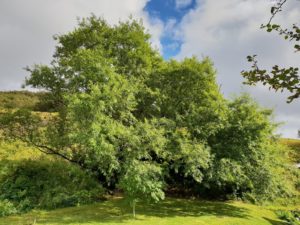
The Tree of the Year 2017 is a European beech in the public park Hellisgerði in Hafnarfjörður. Beech is a very rare tree species in Iceland, as it generally prefers a much warmer and longer summer than is usually on offer in Iceland. The Hellisgarði park was established in 1922. Little information exists on the early cultivation efforts there. The tree was measured at the nomination ceremony and turned out to be 9,05 m in height, with a circumference of 1,3 m.
Location on Google Maps: https://goo.gl/maps/4vAnNdPQrKxpi7i59
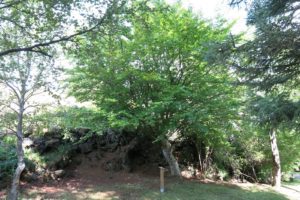
The Tree of the Year 2016 is a black cottonwood in the garden of Garðastræti 11a (a house known as Hákot) in Reykjavík. Cottonwood is very common in Reykjavík, having been extensively planted in the 1970’s – 1990’s. Its popularity stemmed from the fact that it was quick growing (becoming a “tree” fairly soon) and easily propagated. Like other trees in the city cottonwoods reduce winds and is a good air purifier. good tree for reducing wind in the city and. The cottonwood tree at Hákot originally stood in the garden of Garðastræti 9 and was most likely planted sometime between 1952-1956. The old house at Garðastræti was moved in 1985 to make way for new building. The building work began in July 1986 with the clearing out of the vegetation in the garden. The owner of Garðastræti 11a, Ragnhildur Þorláksdóttir, pleaded with the contractors to spare the tree and give her time to contact the head of municipal gardens in Reykjavík. After a little back and forth the result was that the tree was moved to her garden, where she has taken care of it since. Measurements at the nomination ceremony showed the tree to be 17,5 m in height, with a trunk circumference of 180 cm at chest height.
Location on Google Maps: https://goo.gl/maps/gwGdMaWqAKUcdS9PA
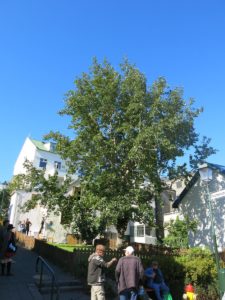
The Tree of the Year 2015 is a rowan tree standing at the site of the farm Sandfell in Öræfi. It is the first rowan to be nominated. Rowan is one of the three tree species native to Iceland and has long been a popular garden tree. The rowan tree at Sandfell was planted in 1923 by the sister-in-law of the farmer at Sandfell, who got it sent from a friend of hers in Egilsstaðir. The farm has been abandoned since 1947 and the farmhouse was torn down in 1974, so the rowan tree is a living remnant of past times. The tree stands by itself, surrounded by grassland and framed by gray mountain slopes in the background, making it a well know landmark in the area. The rowan splits into seven trunks, with a trunk circumference (as measured at the nomination ceremony) between 90-150 cm. The height turned about to be 11,98 m.
Location on Google Maps: https://goo.gl/maps/ScvAeszCDXeDsrgYA
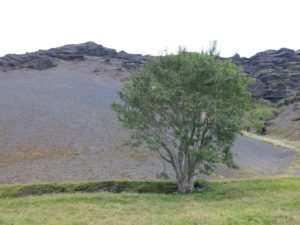
A European larch at the farm Arnarholt was nominated as the Tree of the Year 2014. The farm has existed since settlement times in the 9th century, so has a long-standing history. The tree was planted in 1909, making it over a century old. It most likely came from the plant nursery at Rauðavatn near Reykjavík. It stands on a steep slope, facing southwest in a grove of trees of different species (e.g. Siberian larch, rowan and birch), some planted at the same time but others much younger (e.g. Norway spruce). The farmers at Arnarholt always took good care of the grove of trees. The larch tree was measured at the nomination ceremony and turned out to be 15,2 m in height, with a trunk circumference of 2 m at 60 cm height.
Location on Google Maps: https://goo.gl/maps/9Ekw4zHn6BdQqMQ97
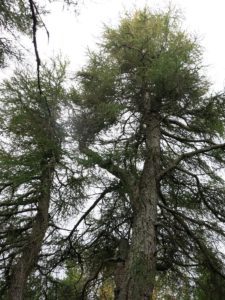
The Tree of the Year 2013 is a black cottonwood on the farm Freyshólar in Fljótsdalur and is the first cottonwood nominated. Black cottonwood is one of the most common tree species planted in Iceland – it grows quickly and is easy to produce. For this reason, it became one of the most common garden trees in the 1970’s. Due to how large it grows and its extensive root system its popularity as a garden tree has waned, but it has been planted extensively in forestry since the 1990’s, as it has one of the highest timber yield per hectare of the trees growing in Iceland. The tree at Freyshólar is most likely derived from material gathered on the Kenai peninsula in Alaska. It was planted in 1953 by twin brothers Baldur and Bragi Jónsson, who worked their entire careers for the Icelandic Forestry Service. Some manure was added to the soil when the tree was planted but received no further fertilizer after that. The tree has thrived nonetheless, as the soils at Freyshólar are deep and fertile. Measurements at the nomination ceremony put its height at 17,5 m with a trunk diameter of 50,5 cm at chest height.
Location on Google Maps: https://goo.gl/maps/opdQYLgZQkCRzGHX6
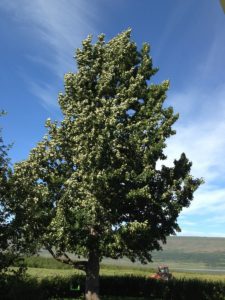


Nýlegar athugasemdir